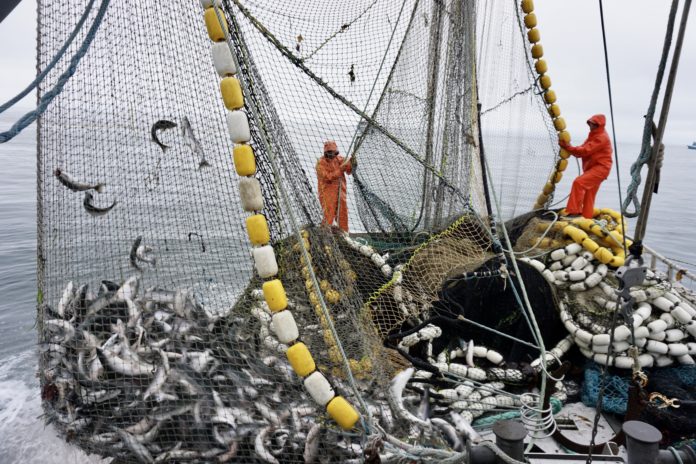
A new analysis integrating international salmon studies from the North Pacific Ocean, that date back to the 1950s, is giving fisheries researchers new insight on salmon and their tolerances of varied ocean temperatures.
The federally funded project, led by researchers at the University of Alaska Fairbanks (UAF), uses information compiled from numerous individual reports published by nations and agencies who funded those reports, but never fully compiled them into an overarching database or analyzed them comprehensively at this scale, UAF researchers said.
The data collectively represents over 44,000 high seas survey gear hauls across the North Pacific and provide contrast from other salmon research, which tends to focus on river habitat, they said.
Curry Cunningham, an assistant professor at UAF’s College of Fisheries and Ocean Sciences, said this ocean-based portion of salmon life cycles is arguably overlooked, at least in terms of the grand investment in salmon research.
“As someone who always wondered where all these fish went when they left Bristol Bay, seeing that pattern come to life was so satisfying,” Cunningham said.
Research methods varied in these decades of study, but they consistently noted the water temperature and location where salmon were caught. That information allowed researchers to create maps with unprecedented detail showing the areas that various salmon species occupy at sea. Some maps, for example, highlight a hotspot for Chinooks gathering in the Bering Sea. They chart the trail that maturing sockeye tend to take from the North Pacific and Gulf of Alaska toward the Alaska Peninsula, traveling through passes into the Bering Sea outside Bristol Bay throughout the spring and summer.
“It’s not as if all these salmon are going to some party in the middle of the Pacific,” said lead author Joe Langan, who worked on the project as a postdoctoral fellow at UAF. “This gives us a broad look at where they go.”
The project itself was funded by the National Oceanic and Atmospheric Administration’s Office of Law Enforcement, which hopes to use information about where salmon are concentrated at sea to help curb illegal fishing. The centralized database is to be housed by the North Pacific Anadromous Fish Commission and made available to the public at a later date.














